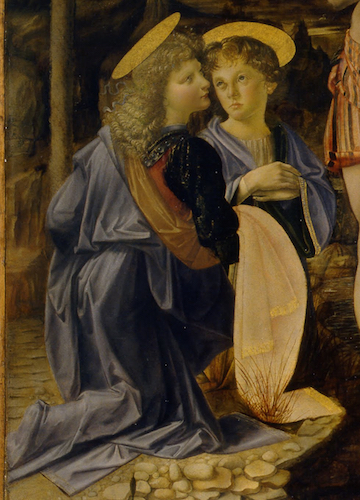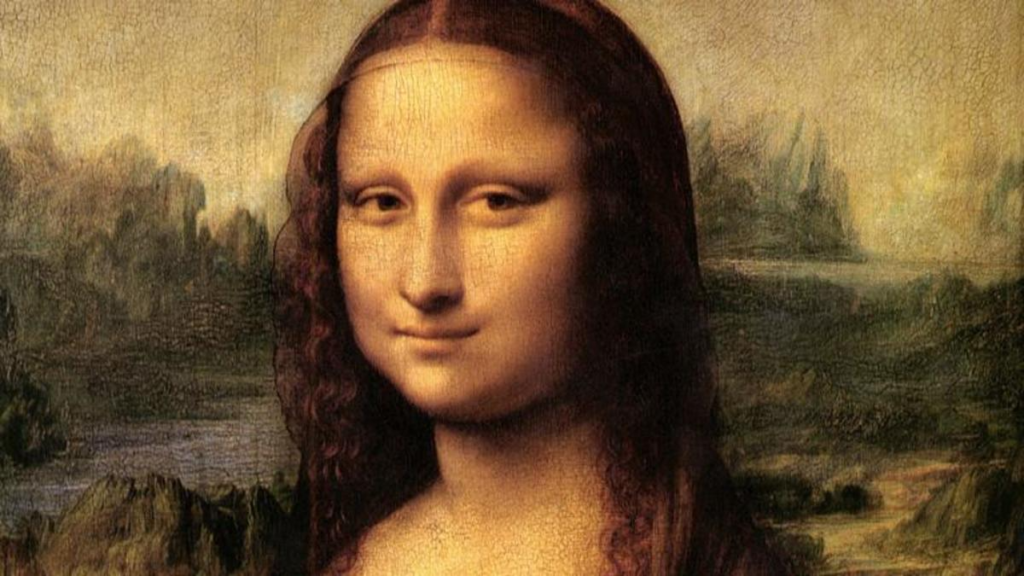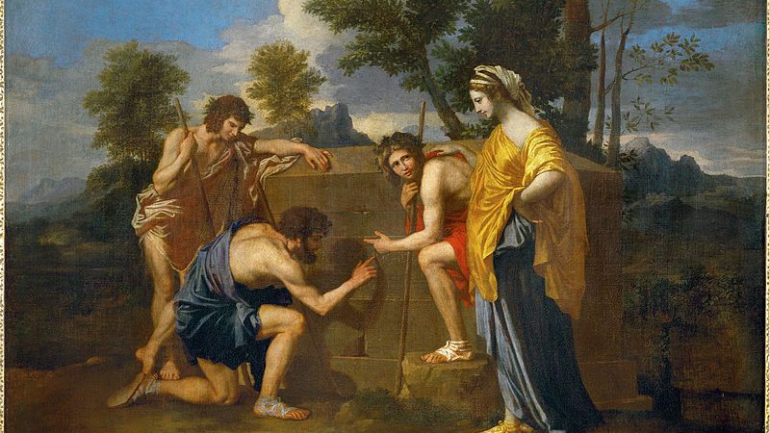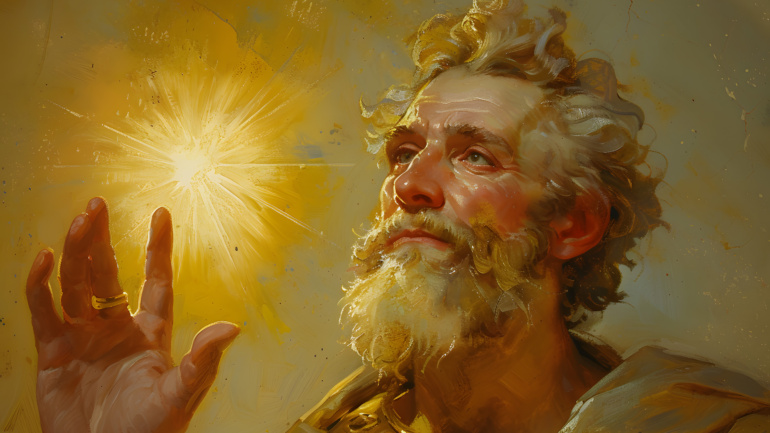“The Amateur Painter” Leonardo da Vinci
Today, we officially enter the realm of the “Three Giants of the Renaissance” and will explore Leonardo da Vinci, Michelangelo, and Raphael. Let’s start with Leonardo, and I will explain what kind of person he was from various fields and aspects.
- Leonardo da Vinci is one of the “Three Giants of the Renaissance” and is regarded as “the most perfect representative of the Renaissance.” He was highly knowledgeable and deeply thoughtful, a unique polymath in human history who left extremely valuable contributions in numerous fields. It can even be said that placing da Vinci at the top of the list of artistic masters does him a disservice, as his contributions to human civilization go far beyond the realm of painting. His titles include mathematician, musician, engineer, architect, weapons manufacturer, and more, which is why “genius” is the most basic description of him.
- Leonardo da Vinci, whose full name is Leonardo di ser Piero da Vinci, was born in 1452. He was the oldest of the “Three Giants of the Renaissance” (born in the 1450s), while Michelangelo, born in 1475, is of the “70s generation,” and Raphael, born in 1483, is the youngest, representing the “80s generation.” The late 15th and early 16th centuries, during which da Vinci lived, coincided with the late Ming Dynasty in China, and this period marked the pinnacle of the Renaissance across Europe. In the north, there was Dürer; in Venice, Titian; and everywhere there were masters. This was the “Golden Age of the Renaissance,” represented by the “Three Giants.”
- In an era abundant with artistic masters, da Vinci, Michelangelo, and Raphael earned the title of the “Three Giants” because their artworks achieved a state of complete self-consistency. Many talented artists have their own “special skills,” but often with some flaws. The “Three Giants,” although their artistic styles were different, each created a perfectly coherent artistic system that leaves no room for critique. Therefore, all three have high standing in the field of painting, though for da Vinci, painting is just one of his many achievements.
- Da Vinci achieved great success in painting, but his “genius” lay precisely in the fact that painting was only his “hobby.” Da Vinci had a great talent for painting, and early on, he collaborated with his master Verrocchio on a painting. In the painting, two little angels were to be painted by each of them. The result was that the angel painted by the 20-year-old da Vinci was more accurate and lifelike than the one painted by his master. It is said that Verrocchio, upon seeing this, decided to stop painting. However, in another early portrait by da Vinci, we can see clear flaws. The painting does not follow the basic principles of perspective, and even the woman’s nose is crooked. This indicates that despite his great talent, young da Vinci wasn’t fully dedicated to painting and did not invest all his energy into it.
- Da Vinci’s “amateurism” is also reflected in the quantity of his works. Apart from the famous “Mona Lisa,” the only other well-known works that come to mind are “The Last Supper” and “The Virgin of the Rocks.” Given da Vinci’s artistic skills and long life, one would expect him to have left behind many more works. In fact, there are fewer than twenty works that can be fully confirmed as his. This suggests that da Vinci painted “casually” in his spare time.
- Even as an “amateur,” da Vinci made significant contributions to painting techniques, particularly with his invention of the sfumato technique, which is often described as “subtly impressive.” Sfumato is a painting technique that creates a blurred effect in certain parts of the artwork. The mysterious smile of the Mona Lisa comes from this technique, as the corners of her mouth are blurred, giving an uncertain feeling and thereby creating an air of mystery. This technique is still widely used in painting today.
- Da Vinci’s most significant “amateur” painting achievement is probably “The Last Supper,” not “The Mona Lisa.” This painting demonstrates his extraordinary sensitivity to dramatic effect. Before him, many artists had painted this theme, but the figures often appeared stiff. However, in da Vinci’s rendition, every character’s expression is extremely lifelike and accurate, perfectly capturing the moment when Jesus reveals that he will be betrayed. Through dramatic effects, da Vinci also allows the viewer to immediately identify Judas; while everyone else leans toward Jesus or points at him, Judas alone leans back, signaling an attempt to escape, perfectly “capturing” this dramatic moment.
- In “The Last Supper,” da Vinci solved many problems that other artists of his time had not been able to address. He not only ensured proper perspective but also created a harmonious composition. The invention of perspective during the Renaissance gave artists a fantastic tool for depicting nature, but it also posed a challenge. Before this, multi-figure scenes only needed to maintain harmony without worrying about perspective. Creating a harmonious composition that also adhered to perspective was incredibly difficult, but da Vinci brilliantly achieved this.
- While creating “The Last Supper,” da Vinci overcame the problem of low saturation by using scientific methods and incorporating oil painting techniques into the fresco. This novel approach preserved the durability of the fresco while overcoming the issue of low color saturation, making the colors in this masterpiece remarkably vibrant.
- Da Vinci, the “amateur painter,” provides a typical case for how we should assess the artistic achievements of individuals. When considering an artist’s accomplishments, we should focus on breakthroughs and innovations in expression, rather than the quantity of their works. Like da Vinci, who painted very few pieces, or Cao Xueqin, who wrote only one novel, “Dream of the Red Chamber,” or the great mathematician Riemann, who published only eight papers in his lifetime, the quantity of works does not diminish their enormous influence or high status as masters.

The Artwork Collaborated by Master Verrocchio and Young Leonardo da Vinci

The angel on the left was painted by da Vinci and is very lively, while the angel on the right was painted by his master Verrocchio. The right angel’s hand is too large, with distorted proportions.

Early Portraits by da Vinci
In da Vinci’s early portrait work, the most basic principles of perspective are not followed, and even the character’s nose is crooked.

Leonardo da Vinci – Mona Lisa

Leonardo da Vinci – Mona Lisa (Detail)
Due to the use of sfumato, the corners of the mouth are blurred, which gives the painting a sense of mystery.

Ghirlandaio – The Last Supper

Giotto – The Last Supper

Leonardo da Vinci – The Last Supper
The fourth figure from the left, leaning backward, is Judas, the betrayer.
Tip
The Last Supper – An Extra Note
Da Vinci took a long time to finish this painting because he was struggling with what the figure of the traitor, Judas, should look like. However, as the painting took too long, the head of the monastery became very angry and went to complain to da Vinci’s patron, the Duke of Milan, criticizing da Vinci for being so slow. Upon hearing this, da Vinci was furious and threatened the head of the monastery, saying that if he complained again, he would paint Judas’ figure to resemble the monastery head.


